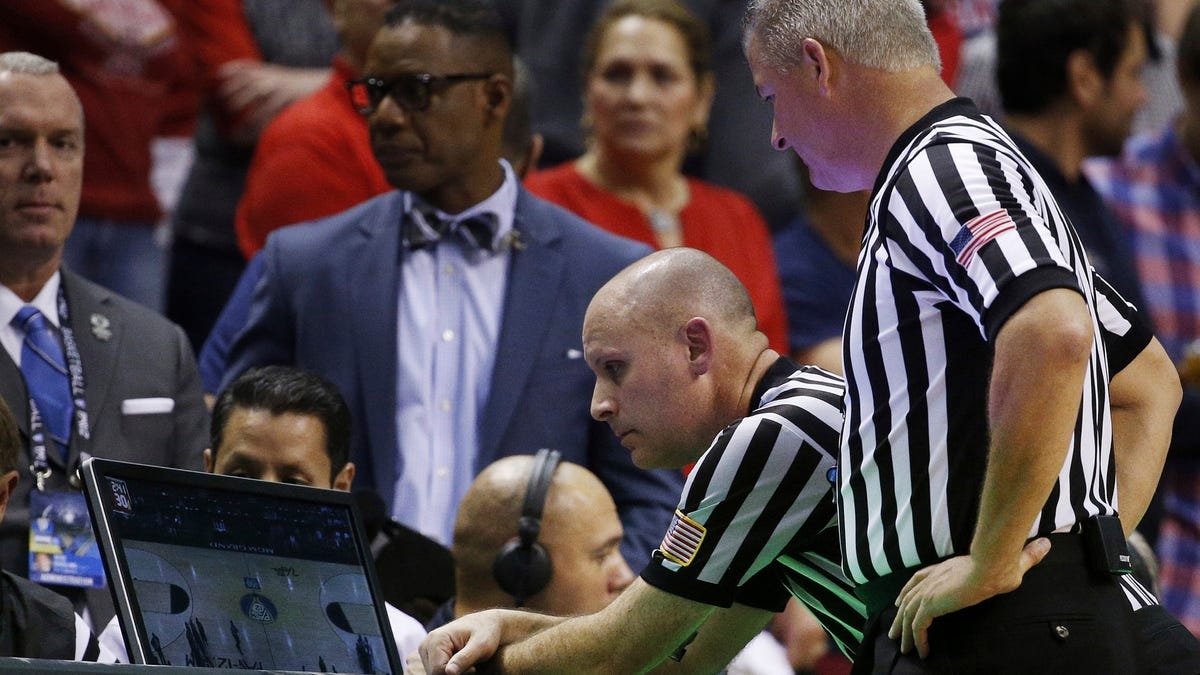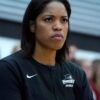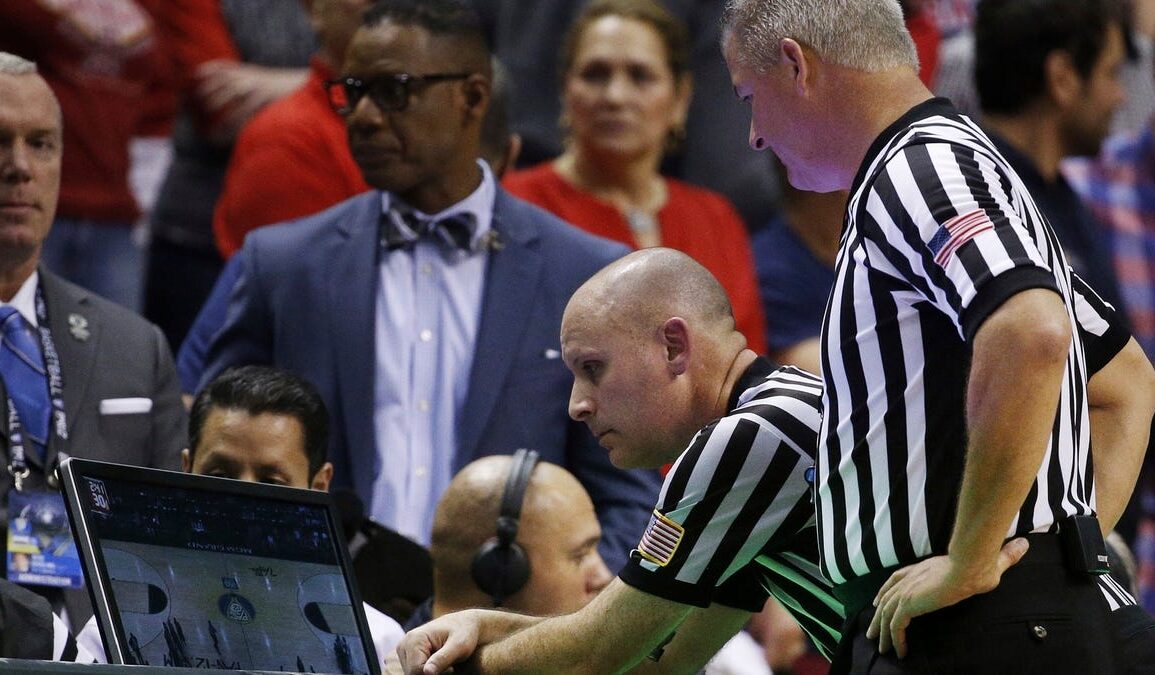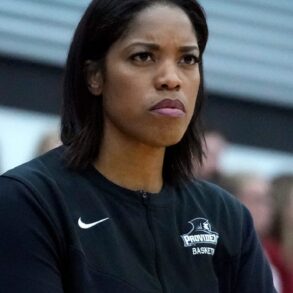
The NCAA Men’s Basketball Rules Committee, in an effort to enhance the flow of games, has recommended that video reviews of out-of-bounds calls can only be initiated by a coach’s challenge.
The NCAA announced Friday that the committee met this week in Indianapolis and addressed concerns about lengthy disruptions, particularly near the end of games.
In addition to recommending the use of coach’s challenges, points of emphasis to improve flow will include directives to address delay-of-game tactics, limit time spent at the monitor, improve game administration efficiency and reduce physicality.
The NCAA Playing Rules Oversight Panel must approve proposals before they become official. The panel is scheduled to meet June 10.
Under the coach’s challenge proposal, teams must have a timeout to request a video review challenge. If the challenge is successful, teams would be allowed to have one additional challenge for the rest of the game, including overtime. If the first challenge is unsuccessful, the team loses the ability to challenge the rest of the game.
Other than in the last two minutes of a game and in overtime, a coach’s challenge also would be necessary to initiate a review of basket interference/goaltending and restricted arc plays. Recent data shows those reviews caused minimal game interruptions. Officials could not initiate video review on out-of-bounds calls at any point in a game.
Fans have complained about the disruption of game flow as the number of situations when video review can be used has increased over the last decade. Karl Hicks, committee chair and associate commissioner for basketball at the American Athletic Conference, said taking steps to improve flow was the priority of this year’s meeting.
“Coach’s challenges were deemed to be the most efficient way to accomplish this goal,” Hicks said. “Data from the NCAA tournament and membership conferences showed a substantial number of reviews were on out-of-bounds plays. The committee looked at other basketball leagues around the world to see what the best solution would be for the NCAA, and the committee agreed with the NBA coach’s challenge system and its one plus one process.”
Officials still can initiate video reviews to check for timing mistakes, scoring errors, shot-clock violations, 2-point versus 3-point field goal attempts and flagrant fouls.
The committee also recommended a modification to the continuous motion rule where an offensive player who ends his dribble going toward the basket and absorbs contact from the defense could pivot or complete the step he is on and finish his shot attempt.
The committee also asked Division I conferences to create a joint working group to provide feedback on the potential change from halves to quarters.
Rule proposals for women’s hoops
The NCAA Women’s Basketball Rules Committee proposed that a coach’s challenge be required to initiate a video review of out-of-bounds calls and three other types of plays.
The committee voted to recommend the change for the 2025-26 season.
Under the proposal, plays that could be challenged at any point during the game include out-of-bounds calls, backcourt violations, whether a change in team possession occurred before the ruling of a foul where free throws would be involved and whether a foul was assessed to the correct player.
Officials could not initiate reviews on these calls with the exception of whether a foul was assessed to the correct player.
Teams would not be required to have a timeout to make a video review challenge in NCAA women’s basketball competition. However, a failed challenge would result in an administrative technical foul for an excessive timeout.
The committee also proposed, among other things, setting the shot clock to 20 seconds when, following a dead ball, the offense is awarded the ball in its front court; eliminating the rule that jerseys need to be tucked in; a team technical foul for using excessive timeouts or playing with six players when the ball becomes live; and suspending the player and head coach for one game if the player competes in a game that the player should have missed due to a suspension.
This post was originally published on this site be sure to check out more of their content.









